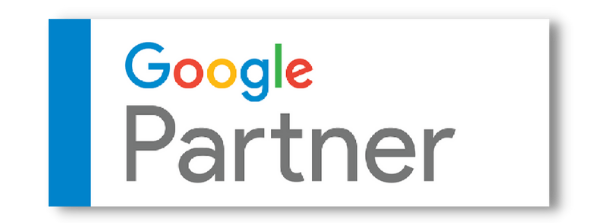SEO Audit Checklist for 2024: Your Ultimate Guide

Published October 17, 2024
It is fundamentally important to make an SEO audit of the website so that it complies with the current SRO requirements, gets the necessary ranking, and attracts traffic. By 2024, the possibilities of both search engine algorithms and users’ behavior will be incredibly dynamic, which makes SEO audits essential.
To do this, we have provided in this guide the steps that you need to undertake to conduct a thorough audit of your site and benchmark it against the latest trends.
1. Analyze Your Organic Traffic
You should begin your SEO audit by getting to know your site and how it performs currently. Check Google Analytics to see how much organic traffic you are getting and which of your pages generates the most traffic.
This plainly helps in identifying rates and the areas that need more improvement than the others. Historical data comparison for emergence of trends and possible drops.
2. Run a Full Site Crawl
You can use tools such as Screaming Frog or Semrush to crawl your website. This will give you an understanding of technical SEO problems like broken links, missing meta tags, and slow page loading.
A site crawl tells you which issues require a developer’s prompt attention. These include crawl errors and broken links.
3. Check Mobile-Friendliness
Regarding Google, mobile-first indexing is the new measure of choice, so mobile optimization is vital. You are encouraged to use Google’s Mobile-Friendly Test, or Lighthouse, where you will analyze the site’s mobile usability.
Ensure your written copy works well at different resolutions, your pages load quickly, and the layout is clear.
4. Verify Site Security (HTTPS)
Security is a critical factor in SEO analysis. As guaranteed ranking factors, ensure your site is secure with an HTTPS prefix at the front of your URL address.
Some items include mixed content (HTTPS pages loading HTTP resources) and security warnings.
5. Check for Crawl Errors
You’ll want to use Google Search Console to see which pages are causing crawler issues. Crawler errors mean your site will not be indexed as it should be.
Certain things must be done right, such as robots.txt issues like blocked pages and all the pages that must be indexed.
6. Ensure Proper Index Management
Use correct canonical links to avoid violating search engine optimization principles. Crawl of crawl: Ensure that Google is only indexing the preferred version of your site URL—whether www or non-www, HTTP or HTTPS—to avoid indexation issues.
To check correct indexing, Google Search Console should be used.
7. Review Title Tags and Meta Descriptions
Each page must have a title tag and meta description that contain the respective keywords. Since the titles will often be shown in the search results for your web page, they should be very specific and contain your main keywords. The meta tag description should encourage people to click on the link and visit your site.
8. Analyze Heading Structures
Your content should have proper threading, so use frequent H1, H2, and H3 tags. You should use H1 for a top title on the page and H2 & H3 for other sub-titles if there are, so the webpage is easy to read. Using secondary keywords in these headings can also enhance the website’s SEO rankings.
9. Optimize Images
Images are most important in page speed optimization as well as website accessibility. Optimize images by resizing them to a smaller data size, name the files appropriately to ensure people understand the content they are likely to find inside a folder and use alt text that describes the image content and has the right keyword.
10. Review Internal Linking Structure
An adequately done internal link also assists in equal distribution of a website’s ranking or page authority throughout the entire site. Make sure that major pages are used frequently by internal links and delete or correct wrong internal links. It also enhances the conditions of using a resource as it helps to orient users to the most useful information.
11. Assess Backlink Profile
This highlights that there is less valuable in your SEO than a strong backlink profile. You can use Ahrefs or Moz to check your backlinks, determine which are of low quality/are spam and then mark them as spam if necessary. Sub-object of concentrating backlinks from other worthwhile websites and other beneficial pages to enhance the authority.
12. Check for Duplicate Content
Duplicate content dilutes your SEO efforts. Use tools like Copyscape to identify any duplicate pages and ensure proper canonicalization. If duplicate content is found, consolidate or redirect these pages to avoid penalties from search engines.
13. Monitor Page Speed and Core Web Vitals
In the same month of April, another small experiment was conducted which also revealed that page speed is the ultimate ranking factor. Google PageSpeed Insights is a tool that measures loading performance and presents the problems that may slow down the page. Make sure you pay specific attention to your Core Web Vitals such as LCP, FID and CLS.
14. Review Content Quality and Gaps
Conduct a content review of your site to be certain the site contains quality, relevant and authoritative contents. You should also use the keyword research tools to update your target keywords if there’s any and to look for any content blind spots. This means it is crucial to align your content with the correct types of user queries and offer something of value.
15. Check Off-Page SEO Signals
Off-page SEO elements, like social signals and brand mentions, are not direct ranking factors but contribute to visibility. Make sure your site is connected to your social media platforms and encourage content sharing to increase traffic and engagement.

Frequently Asked Questions – FAQs
What is an SEO audit?
An SEO audit is a detailed analysis of a website’s SEO performance, identifying strengths and weaknesses across on-page, off-page, and technical aspects to improve rankings.
How often should I perform an SEO audit?
It’s advisable to conduct an SEO audit quarterly to stay ahead of algorithm updates and changing user behaviors.
What are crawl errors?
Crawl errors occur when search engines cannot access certain pages on your site, which can prevent them from being indexed.
How can I improve my mobile SEO?
Ensure your site is mobile-friendly by using responsive design, reducing page load times, and optimizing for mobile-specific search behaviors.
What is the role of backlinks in SEO audits?
Backlinks are critical for off-page SEO. A healthy backlink profile from authoritative sites helps improve your site’s trustworthiness and rankings.
What tools should I use for an SEO audit?
Popular tools include Google Search Console, Google Analytics, Screaming Frog, and Semrush to analyze technical SEO, content, and backlinks.
Final Thoughts
Conducting an SEO audit is an essential practice in keeping your website optimized for search engine performance. In 2024, as algorithms evolve and user behavior shifts, staying on top of your SEO strategy is critical for success. This comprehensive checklist covers the key areas—technical, on-page, and off-page SEO—that need regular evaluation. By addressing each aspect from mobile optimization and crawl errors to content quality and backlink audits, you ensure that your website stays competitive and visible in search rankings.
Regular audits not only help you identify and fix current issues but also prepare your site for future challenges and opportunities. The landscape of SEO will continue to shift, but a thorough and consistent audit process will keep your site adaptable and thriving.
By following this SEO audit checklist, you’ll be better equipped to improve your rankings, increase traffic, and provide a better user experience in 2024 and beyond.
Hire The Digital Marketing Experts
We take online businesses and turn them into online empires by employing smart digital marketing strategies. Our team of experts are trained in a myriad of marketing skill including SEO to help you rank higher in search results, and ad management to ensure your message gets seen by the people you want. Need a business website that attracts business? We also specialize in website design and online sales optimization to help your business grow like never before.

This Content Has Been Reviewed For Accuracy By Experts
Our internal team of experts has fact-checked this content. Learn more about the editorial standard for our website here.

About The Author
Hi, I’m Corinne Grace! As an experienced writer holding a bachelor’s degree from Riverside College, I excel in creating articles supported by thorough research. Specializing in a wide range of topics like marketing and law, I craft engaging stories that connect with my readers. I continuously work to refine my skills to adapt to the ever-changing digital world.



